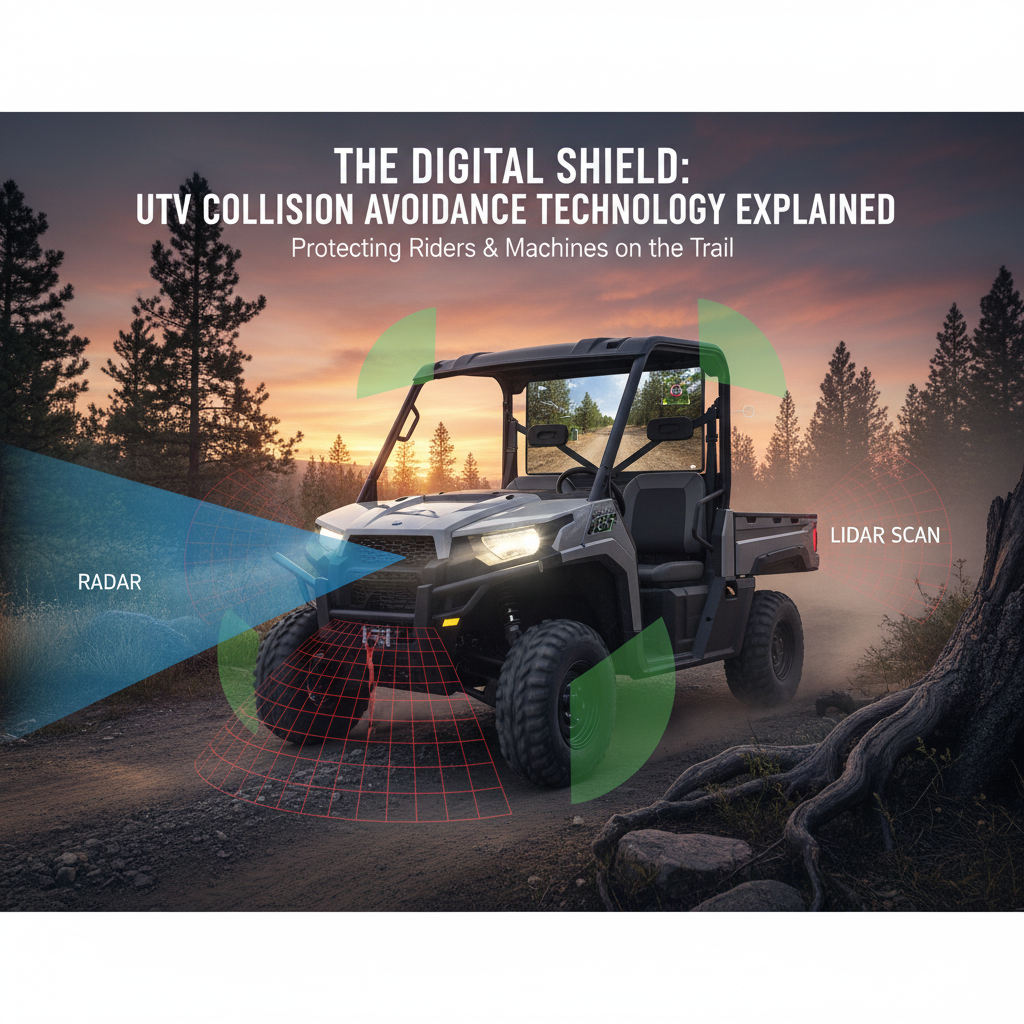The trail doesn’t end when the sun goes down. For many off-road enthusiasts, the night offers a unique, challenging, and exhilarating experience. However, traditional headlights, even powerful LED light bars, can only illuminate what’s directly in front of you. They often fail to cut through fog, dust, or heavy rain, and they certainly can’t spot a deer or a hidden obstacle lurking just beyond the beam.
This is where night vision enhancement systems come into play.
Once the exclusive domain of the military and law enforcement, advanced thermal and digital night vision technologies are now accessible to UTV owners, fundamentally changing the way we ride after dark.
These systems provide a level of awareness and safety that no amount of raw light can match.
I’ve seen the game-changing difference these systems make—the ability to spot a heat signature from a lost pet, navigate a dense fog bank, or simply drive with confidence at speed.
This guide is your deep dive into the world of UTV night vision.
We will dissect the core technologies, discuss the critical legal and safety considerations, and show you how to integrate these powerful tools into your side-by-side for the ultimate nocturnal adventure.
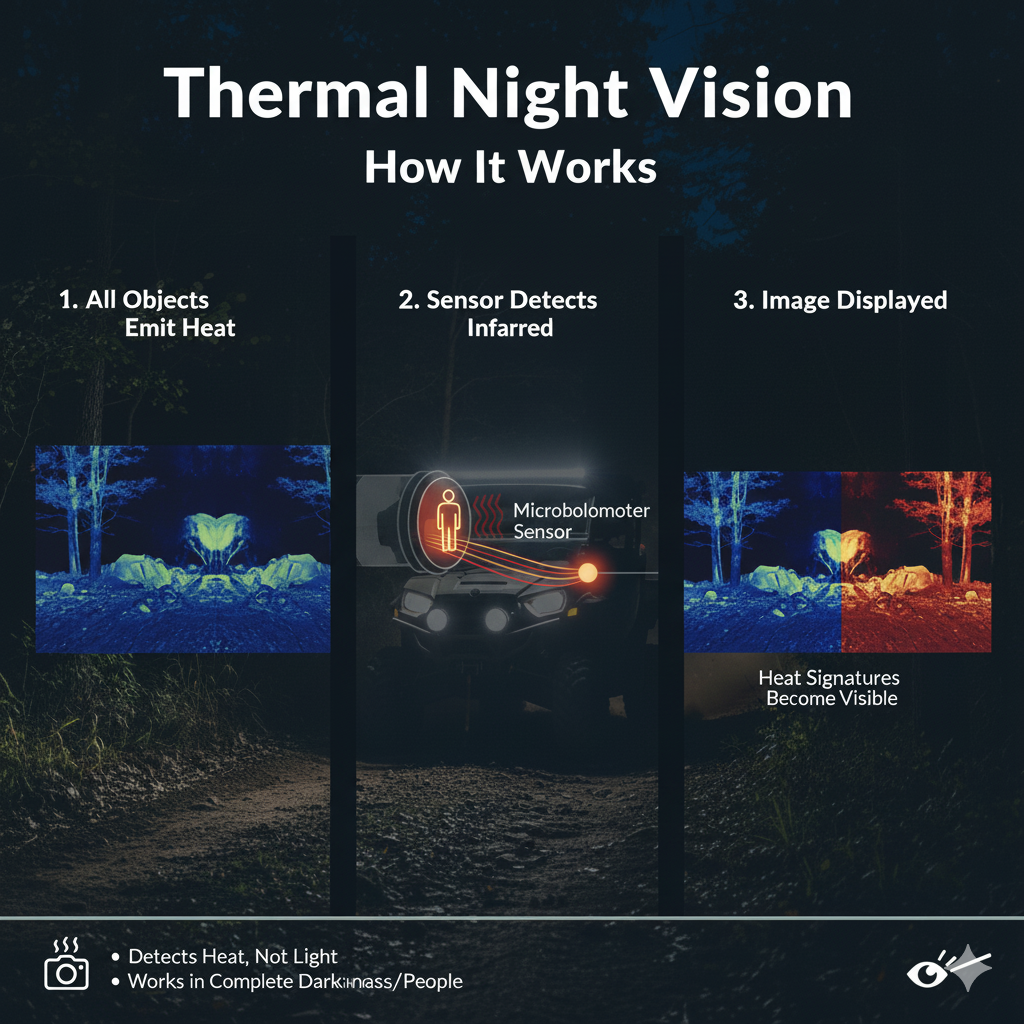
Phase 1: The Three Pillars of Night Vision Technology
Not all night vision is created equal. The term encompasses three distinct technologies, each with its own strengths and ideal applications for UTV use.
1. Thermal Imaging (Infrared)
Thermal cameras do not rely on light at all. Instead, they detect the heat (infrared energy) emitted by objects.
- How it Works: Everything above absolute zero emits heat. Thermal cameras convert these temperature differences into a visible image, typically displaying warmer objects (like animals, people, or engines) in bright colors against a cooler background.
- UTV Application: Thermal imaging is a game-changer for spotting wildlife, people, or engine heat through fog, smoke, or complete darkness. It is excellent for search and rescue, hunting, and general safety.
- Limitation: It cannot see through glass (like a windshield) because glass blocks the infrared spectrum. It must be mounted externally.
2. Digital Night Vision (Ultra Low-Light Sensors)
Digital night vision uses highly sensitive CMOS or CCD sensors to capture even the smallest amount of ambient light (starlight, moonlight) and amplify it electronically.
- How it Works: These systems are essentially extremely powerful digital cameras. They process the faint light, enhance it, and display a full-color or monochrome image on a screen.
- UTV Application: Devices like the SIONYX Aurora are often helmet-mounted or dash-mounted and are excellent for general navigation and maintaining a wider field of view than traditional light beams.
- Limitation: Performance degrades significantly in absolute darkness without an external Infrared (IR) illuminator.

3. Image Intensifier Tubes (Traditional NVG)
This is the classic “green screen” night vision technology, which uses a vacuum tube to amplify ambient light thousands of times.
- How it Works: Photons enter the tube, strike a photocathode, which releases electrons. These electrons are multiplied and then strike a phosphor screen, creating the green image.
- UTV Application: Primarily used in helmet-mounted goggles for military or specialized hunting applications, offering the highest resolution and lowest latency for high-speed driving.
- Limitation: Extremely expensive, fragile, and subject to strict export regulations.
| Technology | Principle | Ideal UTV Use Case | Visibility in Fog/Dust |
|---|---|---|---|
| Thermal Imaging | Detects Heat Signatures | Spotting wildlife, search & rescue | Excellent |
| Digital Night Vision | Amplifies Ambient Light | General navigation, wide-field viewing | Fair to Good |
| Image Intensifier | Amplifies Light (Analog) | High-speed driving, specialized use | Good |
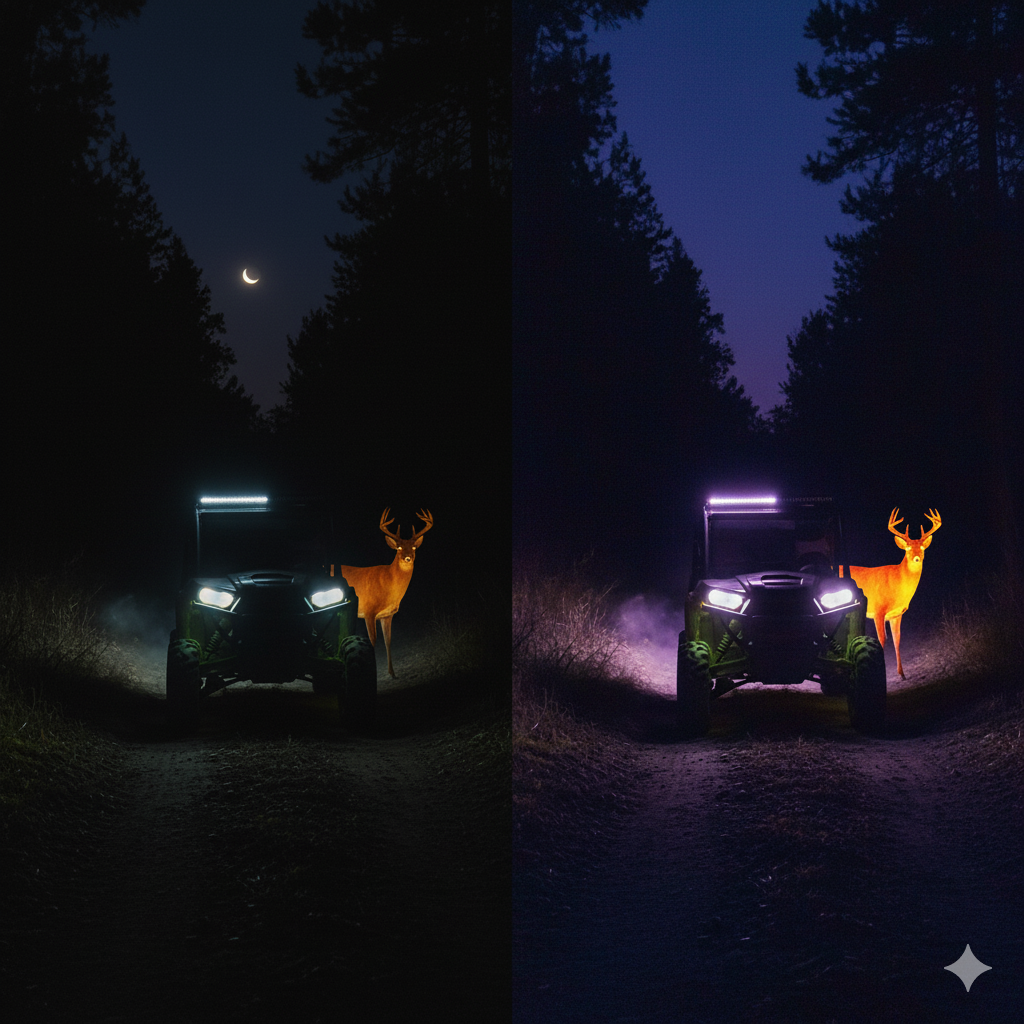
Phase 2: Integration and Mounting Solutions
Proper integration of night vision enhancement systems is key to maximizing their effectiveness and durability in the harsh UTV environment.
1. External Thermal Camera Mounting
Since thermal cameras cannot see through glass, they must be mounted externally, typically on the roof, light bar, or front bumper.
- PTZ (Pan-Tilt-Zoom) Systems: Advanced systems like the Dark 30 or NightRide often feature PTZ capabilities, allowing the driver to scan the environment 360 degrees. These are typically mounted on the roof or a dedicated roll cage crossbar.
- Fixed-Mount Systems: Simpler, fixed-mount cameras are often integrated into the front grille or bumper, providing a constant view of the immediate path ahead.
- Display Integration: The camera feed is routed to a dedicated, waterproof display screen mounted on the dash or integrated into a multi-function display unit.
2. Power and Wiring
Night vision systems, especially thermal cameras, require clean, reliable power.
- Dedicated Circuit: Always wire the system to a dedicated, fused circuit, preferably through an auxiliary fuse block, to prevent electrical interference with other UTV systems.
- Protection: Use waterproof connectors and protective wire loom to shield the wiring from water, mud, and abrasion.
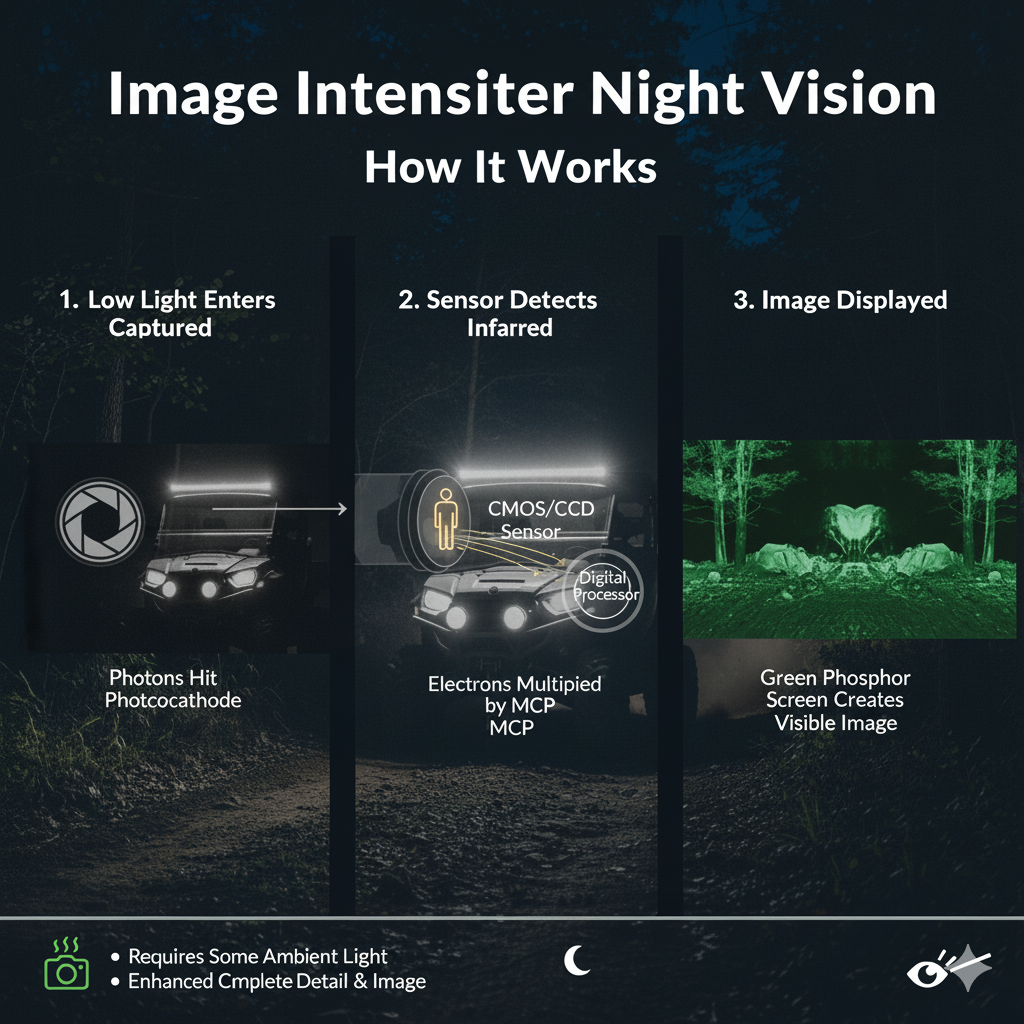
Phase 3: Legal and Ethical Considerations
The use of night vision enhancement systems is not without legal and ethical boundaries, particularly when hunting is involved.
1. Legality of Thermal and Night Vision for Driving
In most jurisdictions, simply having a thermal or night vision camera mounted on your UTV for enhanced driving safety is legal.
- Safety Enhancement: Authorities generally view these systems as safety enhancements, similar to backup cameras or advanced lighting.
- No Obstruction: The key legal consideration is that the display screen must not obstruct the driver’s view of the road or trail.
2. Hunting Regulations
This is where the law becomes highly restrictive and varies significantly by state and country.
- Prohibition: In many areas, using any form of artificial light, night vision, or thermal imaging to spot, locate, or take game animals is strictly prohibited.
- Exceptions: Some states allow the use of thermal or night vision for hunting feral hogs or other non-game animals.
- Critical Action: Always check the local and state hunting regulations before using any night vision system while carrying a firearm in your UTV. Ignorance of the law is not a defense.

Phase 4: Beyond the Camera—Integrated Safety
The best night vision system is one that works seamlessly with your other safety and lighting components.
1. Infrared (IR) Illuminators
For digital night vision systems, an external IR illuminator is essential in areas of absolute darkness.
- Invisible Light: These light bars emit light in the infrared spectrum, which is invisible to the human eye but is powerfully amplified by digital night vision sensors.
- Stealth: This allows you to “light up” the trail for your night vision system without alerting wildlife or other riders with visible light.
2. Head-Mounted Systems
For the most dynamic and natural vision, many riders use helmet-mounted night vision goggles (NVGs) in conjunction with a fixed thermal camera.
- Situational Awareness: The fixed thermal camera provides a broad, heat-based view of the environment, while the NVGs allow the driver to look around corners and maintain a natural view of the controls and surroundings.
- Latency: When driving at speed, it is crucial to use high-quality, low-latency digital or analog NVGs to avoid dangerous delays in visual feedback.
Conclusion: The Future of Night Riding
Night vision enhancement systems are no longer a luxury; they are becoming a standard safety and performance upgrade for serious UTV enthusiasts.
By providing the ability to see beyond the limitations of visible light, these technologies unlock a whole new world of off-road exploration.
Whether you are using thermal to spot a downed tree, digital night vision to navigate a pitch-black trail, or a combination of both, the investment in a quality system is an investment in safety and adventure.
Just remember to respect the power of the technology and always adhere to local regulations, especially concerning hunting.
Don’t just ride at night—see the night!
References
[1] Robofinity – Why Your UTV Needs a Thermal Vehicle Camera
[2] Ultimate Night Vision – Vehicle Mounted
[3] Dark 30 – Vehicle Mounted Thermal Camera: Mounting Options
[4] SIONYX: Digital Night Vision
[5] UAV1 – Are Thermal Imaging Devices Legal To Own and Use?

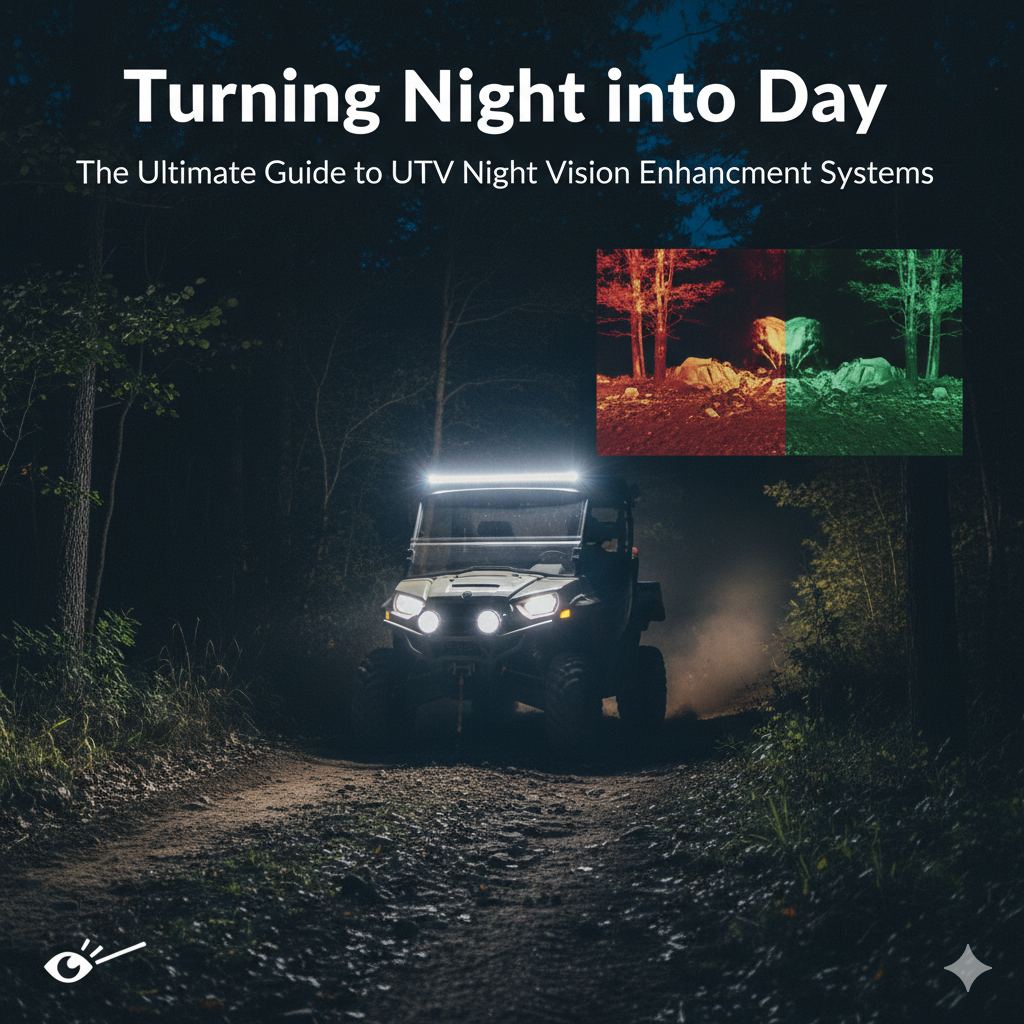


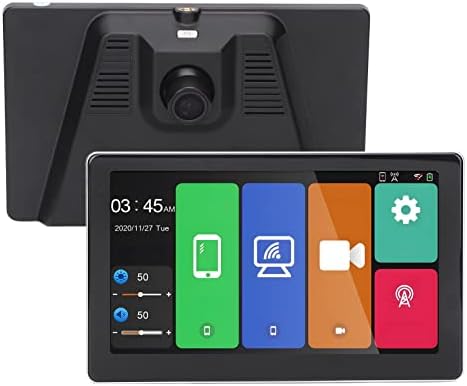



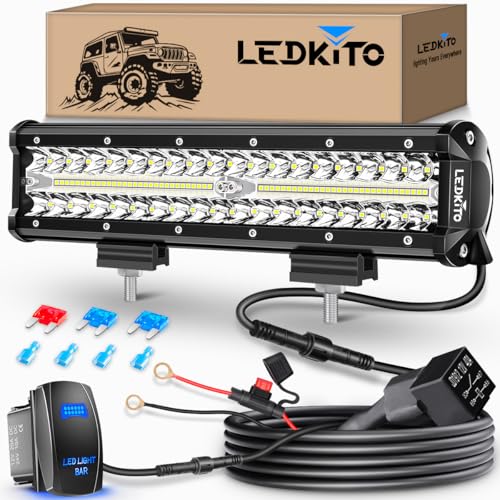



![True Mods 3ft Spiral RGB LED Whip Light for UTV ATV [RF Wireless Remote] USA Flag Waterproof LED Lighted Whip CB Antenna Pole Stick for RZR Can-Am Polaris SxS 4x4 Quad Dune Buggy 4 Wheeler Accessories](https://m.media-amazon.com/images/I/51tD5MhdrPL.jpg)
